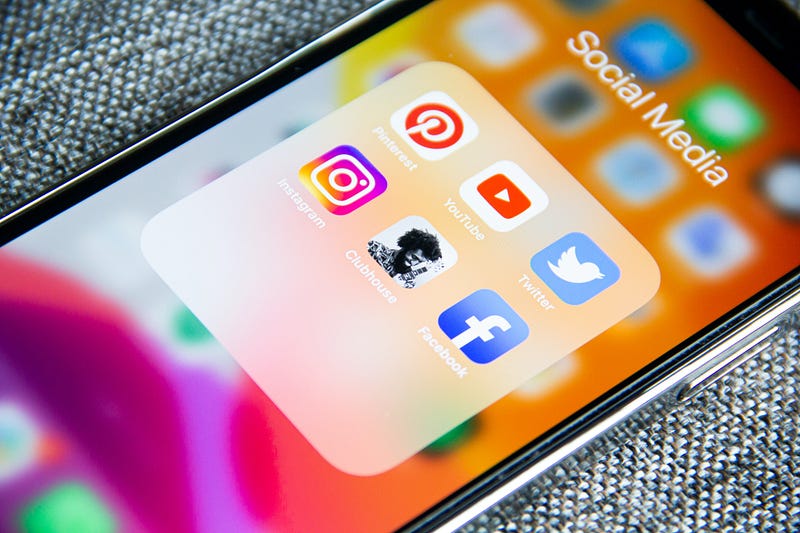Navigating the Complexities of Online Friendships
Written on
Chapter 1: The Challenge of Defining Online Friendships
Understanding the distinction between social media connections and genuine friendships can be quite challenging. Here’s a guide on how to navigate it.

I often find myself feeling hurt when someone I considered a friend chooses to "unfollow" me on Instagram. Even more painful is the realization that they never followed me back despite my active engagement with their posts over several months.
As an introvert, I deeply value human connection, yet I primarily seek it in online spaces for various reasons. I have friends scattered across the country, and while I may not see them frequently in person, we maintain our relationships through calls, texts, and social media platforms like Facebook Messenger.
My circle of close friends is quite small, as I tend to be a solitary person who enjoys my own company (even when battling racing thoughts from ADHD). My past experiences have taught me that attempting to connect with others often felt fruitless.
During my childhood, I was drawn to adults who engaged in meaningful discussions. I struggled to relate to peers who seemed more interested in pop culture rather than exploring deeper topics like literature and philosophy.
Though I made efforts to connect, my attempts often fell flat. I remember awkwardly trying to bond by echoing others' words, which usually resulted in failure. Eventually, I stopped pursuing friendships with the "normal kids" and found companionship among the "weird kids," the outliers in our class who I now recognize as likely neurodivergent individuals.
One such friend was Sara, who accompanied me through grades 5 to 7, including a summer camp on our school grounds. Her presence made navigating school much more manageable, even amidst the challenges I faced.
Our friendship flourished because we were both labeled as "different." I often isolated myself, feeling disconnected from classmates due to my shyness, serious demeanor, and unique hobby (figure skating). I sensed that my peers perceived me as aloof, prompting me to build an even stronger barrier.
Sara, on the other hand, faced rejection for her hyperactive nature, expressive gestures, and unconventional style. While I was viewed with suspicion, Sara was outright disliked for her messy appearance, rapid speech, and tendency to switch voices mid-conversation.
However, our shared interests in art and humor brought us together. We both adored improv comedy and often crafted our own sketches during recess. Our mutual love for drawing became a coping mechanism during less engaging classes, and we collaborated on cartoons and even created new Pokémon designs.
Now, reflecting on our connection, it's clear we bonded over our shared ADHD experiences. While Sara's hyperactivity was overt, mine manifested internally, leading to an eventual diagnosis at 11. Many people mistakenly believe that girls who appear calm cannot have ADHD, but my primary challenges were in focusing and maintaining attention during lessons.
As an adult still managing ADHD (my diagnosis was reaffirmed last year), I understand why I gravitate toward online friendships. The digital environment offers less stimulation and fewer social cues to interpret, allowing me to engage at my own pace without the pressure to "slow down."
Yet, I must remind myself that online and in-person interactions differ significantly. While physical friendships demand a certain social literacy, online relationships come with their own set of "rules."
Section 1.1: Are You Friends in Real Life?
A straightforward way to assess if your "friends" on social media are genuine friends is to consider whether you've interacted in real life. However, this can have varying degrees.
For instance, I met some individuals while working as a background actor in 2021. One person established a group chat to keep us in touch, and we eventually went out for mini golf and dinner. Despite the fun, once the project concluded, we returned to our separate lives.
This leads to the realization that some connections are situational; we might have "gym buddies," "work friends," or even "internet friends." While we may feel camaraderie in those contexts, it often doesn't extend beyond them.
Section 1.2: The Complexity of Online Relationships
Friendships used to be easily defined, rooted in geographical proximity and shared experiences. Today, the advent of the internet has blurred those lines. While some online friendships transition to the real world, many remain superficial.
I can count on one hand the number of social media acquaintances I consider true friends. Valid or not, online friendships hinge on genuine connection, which can be challenging to gauge through a screen.
So, how do I differentiate friends from mere acquaintances? The answer lies in emotional honesty.
Subsection 1.2.1: The Hallmarks of True Friendship
True friends engage in open conversations about various topics, fostering an environment of mutual respect even when disagreements arise. They share meaningful details about their lives, including family, aspirations, and hobbies, ensuring that the exchange is reciprocal rather than one-sided.
Additionally, true friends offer advice and support, creating a safe space for each other to express concerns without fear of judgment. They understand and accept each other's quirks, making allowances for personal struggles.
Chapter 2: Understanding the Lifecycle of Friendships
The concept of friendships can be explored through the lens of the poem "Reason, Season, and Lifetime."
This poem illustrates that people enter your life for various reasons, whether for a moment, a season, or a lifetime. Recognizing the nature of each relationship can help alleviate potential heartache and clarify expectations.
Ultimately, the key to navigating friendships—both online and offline—is understanding that not every connection will last forever. By categorizing relationships appropriately, you can save yourself from unnecessary emotional distress.